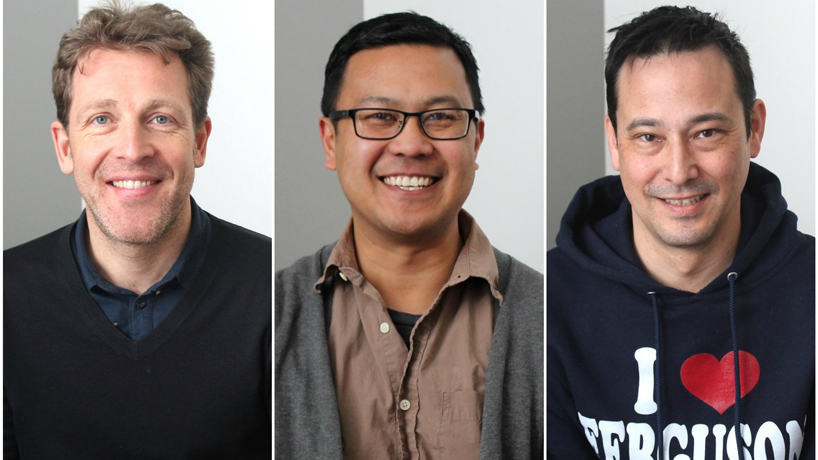
From left, German researcher Jorg Ploger and University of Missouri–St. Louis professors Adriano Udani and Florian Sichling appeared on “St. Louis on the Air” earlier this week to discuss how well immigrants are incorporated into communities in the United States and Germany. (Photo courtesy of St. Louis Public Radio)
The history of the United States is one built by immigrants, but not all newcomers today have been welcomed to the country with open arms.
Anti-immigrant rhetoric has been on the rise in recent years – particularly, it seems, when the immigrants in question come from Latin America, Africa or the Middle East and even if they come to escape war and persecution in their home countries.
Two University of Missouri–St. Louis faculty members – Adriano Udani, an assistant professor in the Department of Political Science, and Florian Sichling, an assistant professor in the School of Social Work – appeared on “St. Louis on the Air” Monday on St. Louis Public Radio | 90.7 KWMU to examine how successfully the United States – and specifically St. Louis – incorporates immigrants and refugees into the broader community.
Researcher Jorg Ploger also appeared on the program with host Don Marsh and offered a point of comparison with insight on how immigration plays out in Dortmund, Germany.
“I would say that there’s two sides or maybe two stories,” Udani said, when asked to assess immigration in the United States. “One story would say that the picture of America is where immigrants see an America that provides opportunity and mobility, so that story would say that we’re very successful.
“But there’s another story in the sense that others would argue that when immigrants look at St. Louis or the United States broadly, that they see a ceiling – sort of a cap – that caps what kind of jobs they have or how much money they can make, where they can live, what kind of schools they can go to.”
Udani, who has done specific research on immigrants from Africa, noted that how they are accepted often depends on how similar they might look to the communities they’re attempting to join.
Sichling, himself a native of Germany, has spent time researching the Bosnian community in St. Louis – typically considered an immigrant success story – including recent research on how members of the second generation are faring as they graduate high school and move into adulthood.
He believes one reason for the discrepancy in the way immigrants are incorporated into society is what he describes as the “politically contradicting messages about the purpose of immigration.”
“There’s on the one hand this humanitarian motive of helping people that are fleeing persecution,” he said, “and then there’s a strong economic incentive to bring in highly skilled people that sort of fuel a local economy.”
Sichling added: “Those are not the same thing, and those are not the same kind of people. But in the absence of sort of a comprehensive idea about what it is that immigration is supposed to do and what it’s supposed to look like, institutions like the International Institute, which does great work … are then charged with having to resolve that contradiction in the way in which they serve immigrants. And a lot of times that’s an impossible task.”
That task falls to organizations such as the International Institute because, unlike in a country such as Germany, government agencies play limited roles in creating a safety net for immigrants.
“If you look at St. Louis, a lot of the territory of immigrant service provision is in the jurisdictions of nonprofits and churches,” Udani said. “Across our many municipalities, there’s few governments that actually have government-institutionalized programs.”
To listen to the full discussion, click here.














